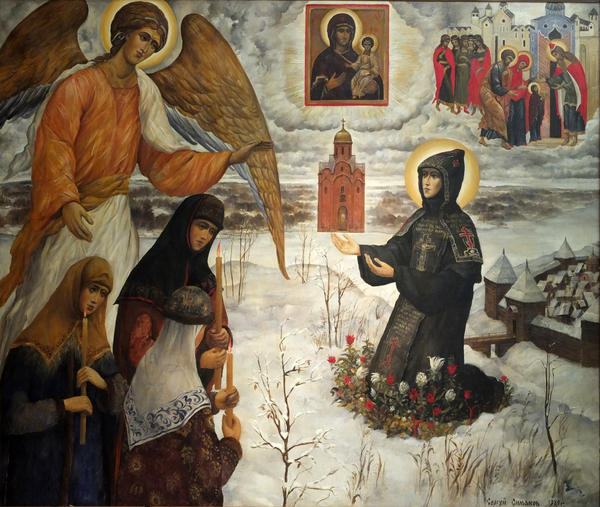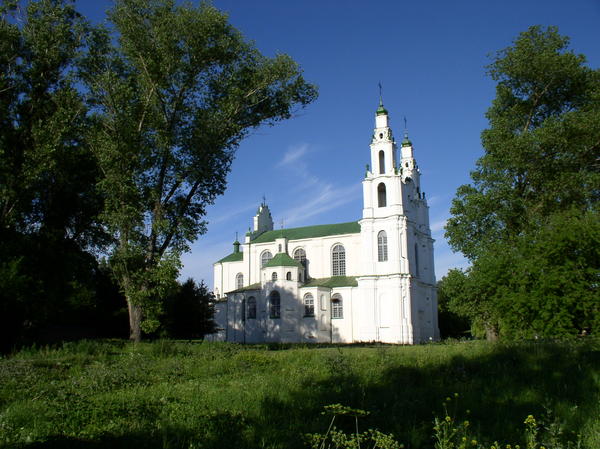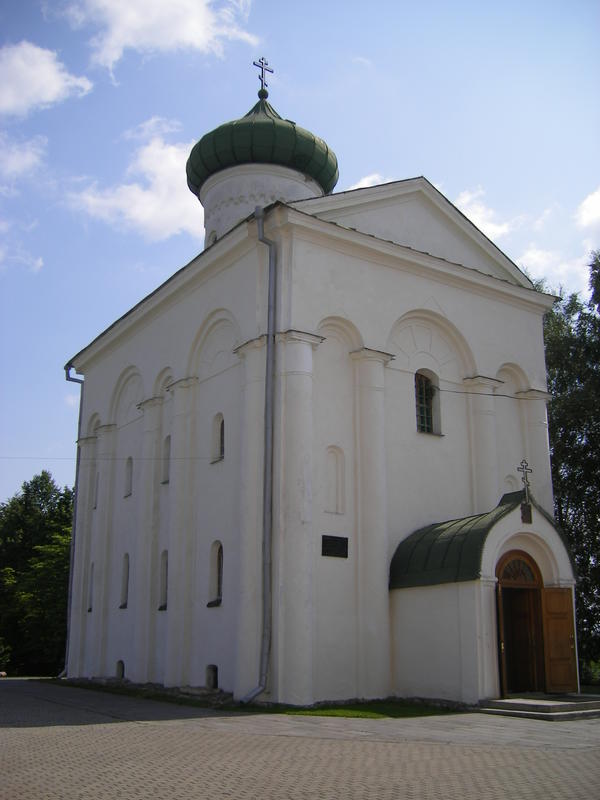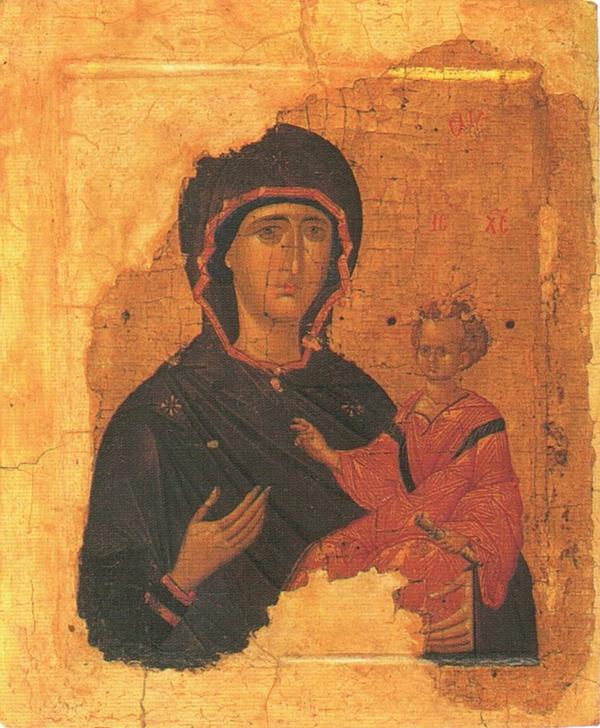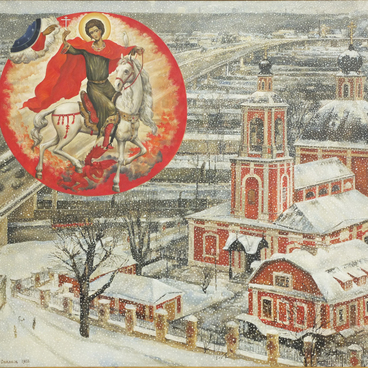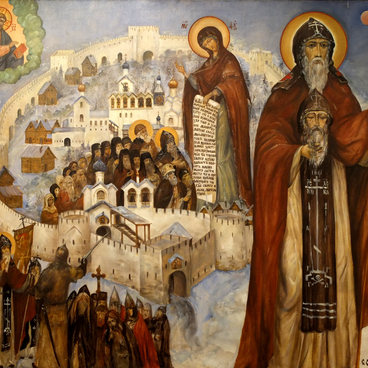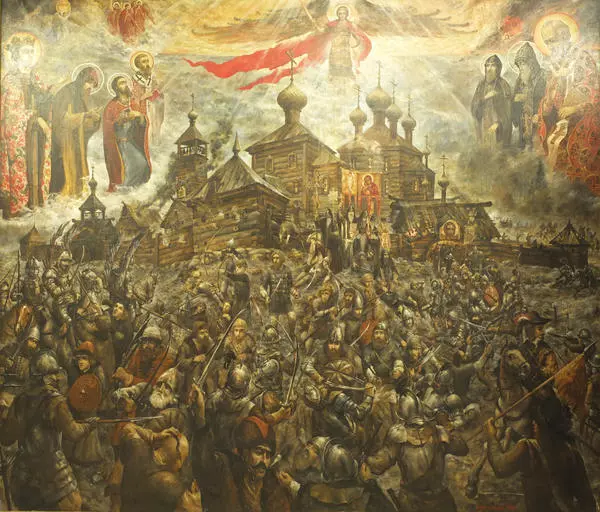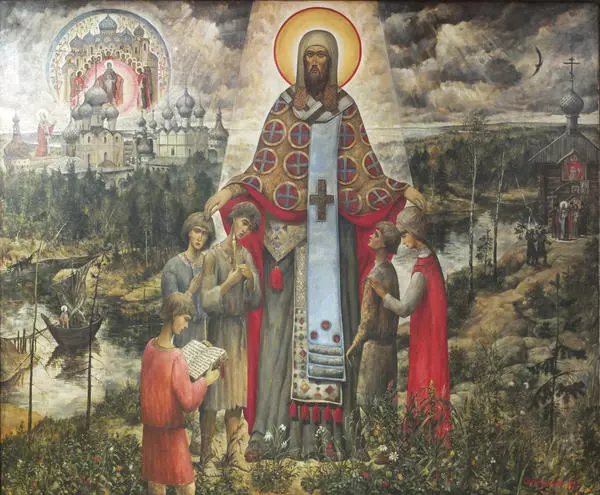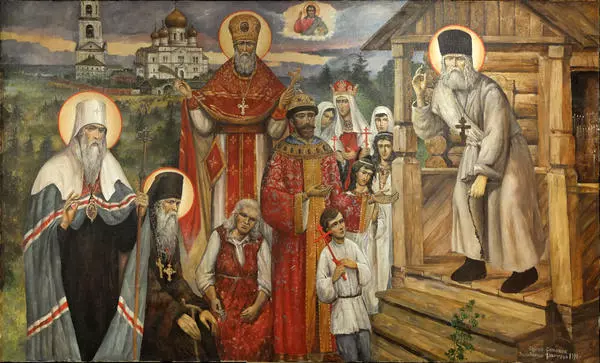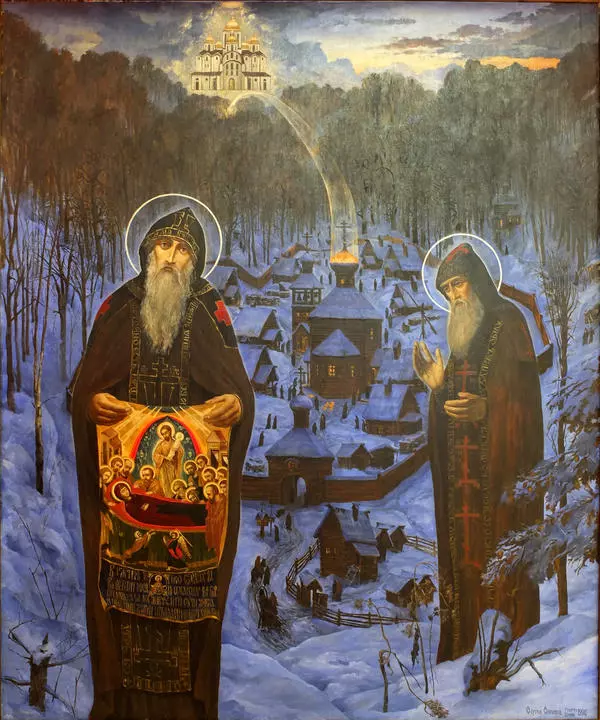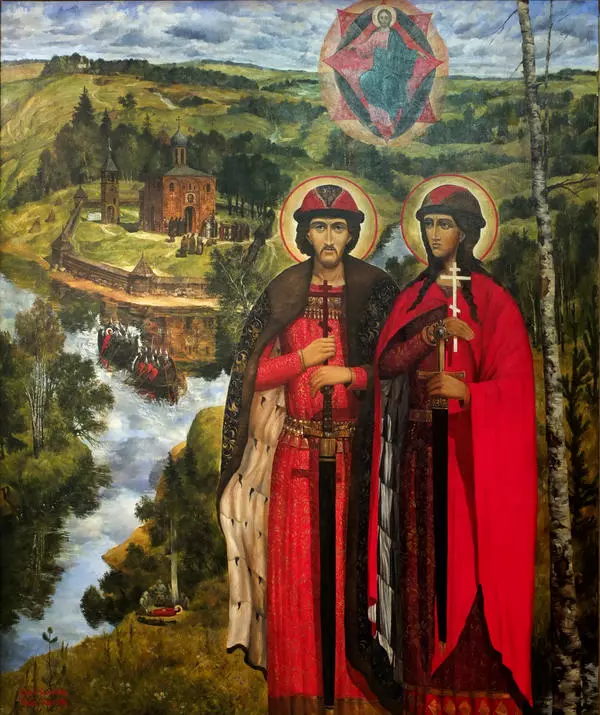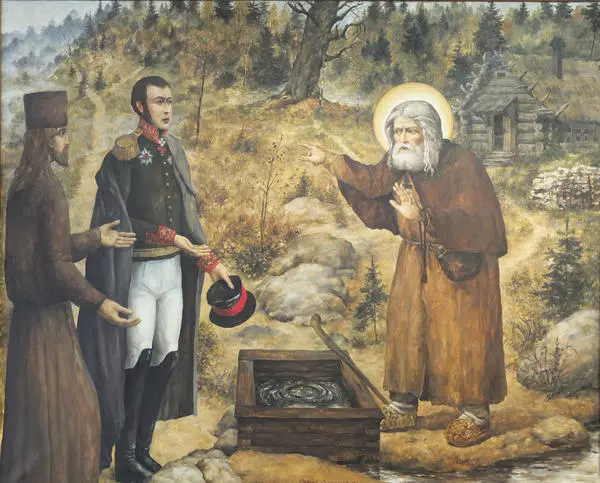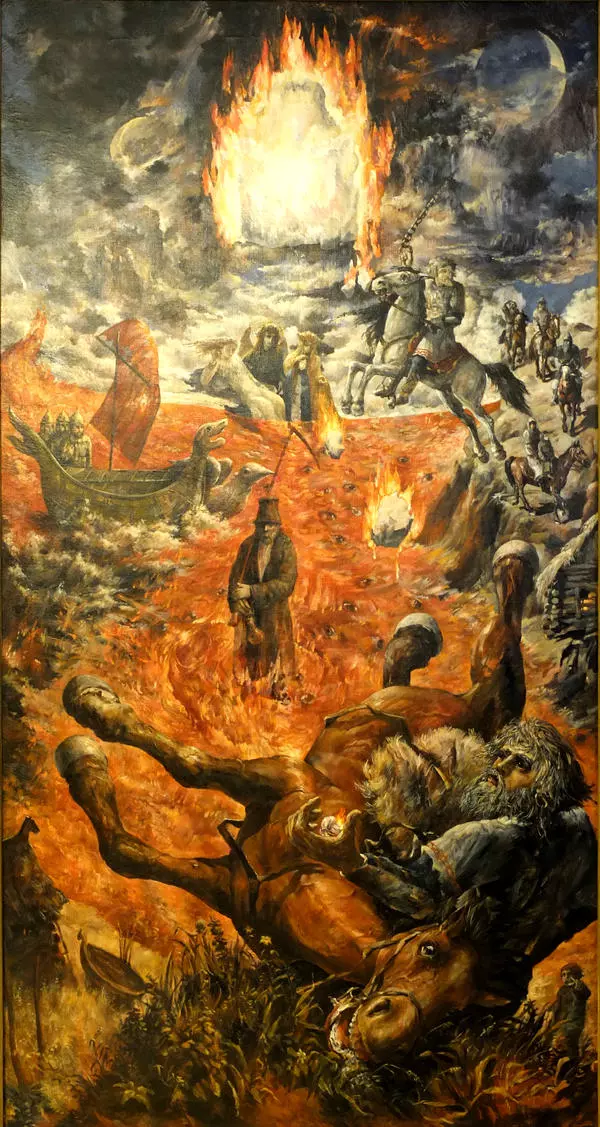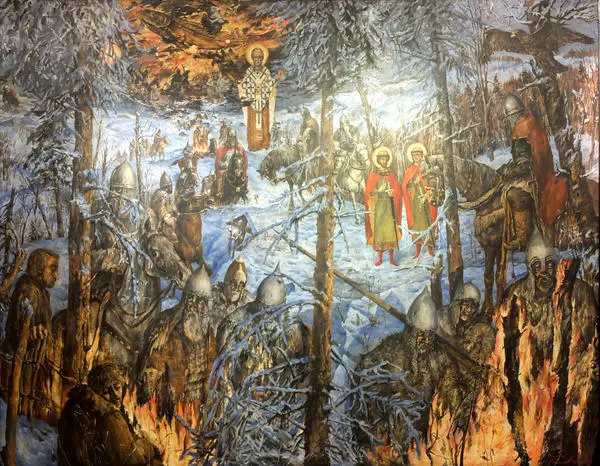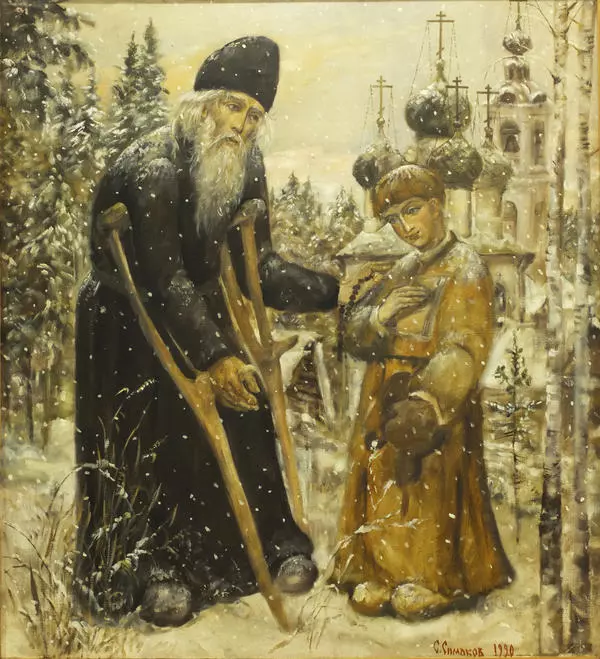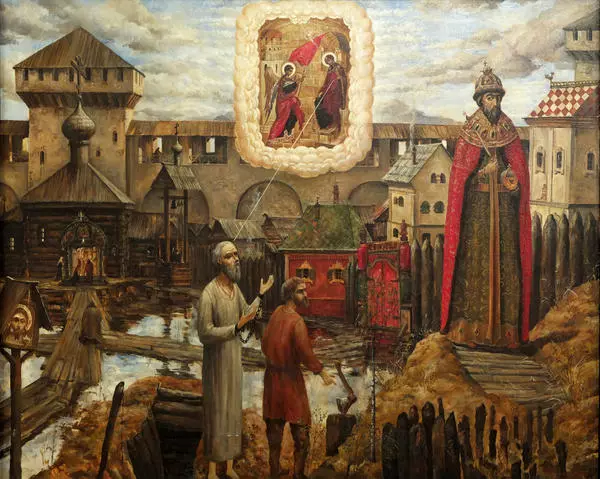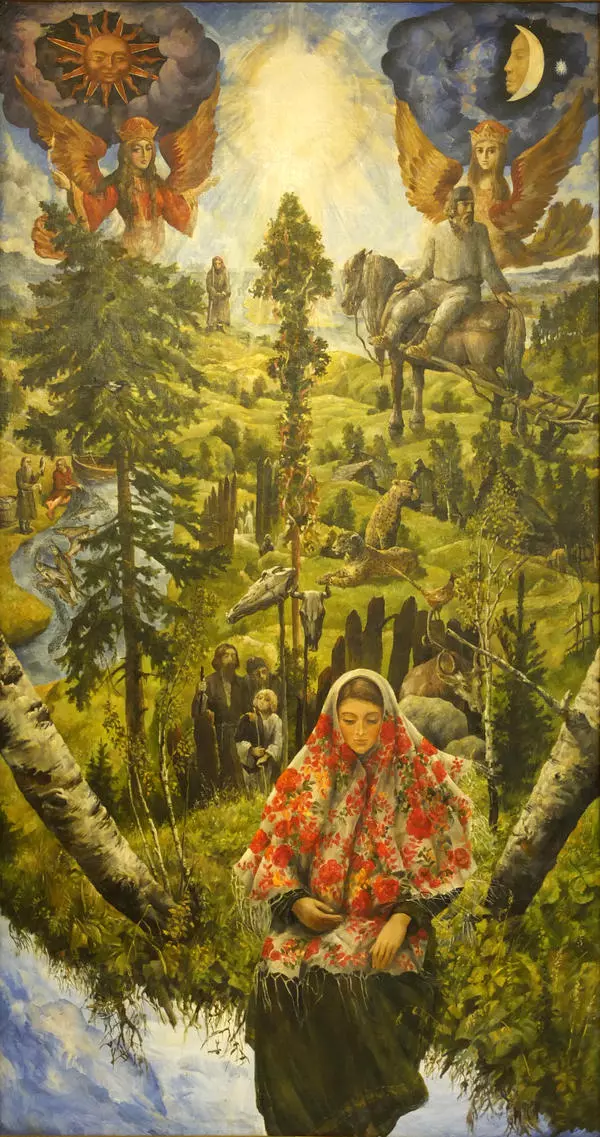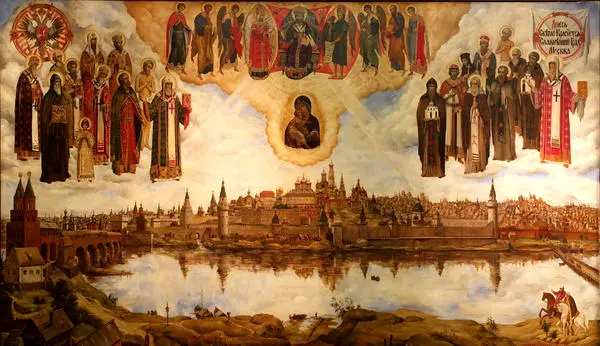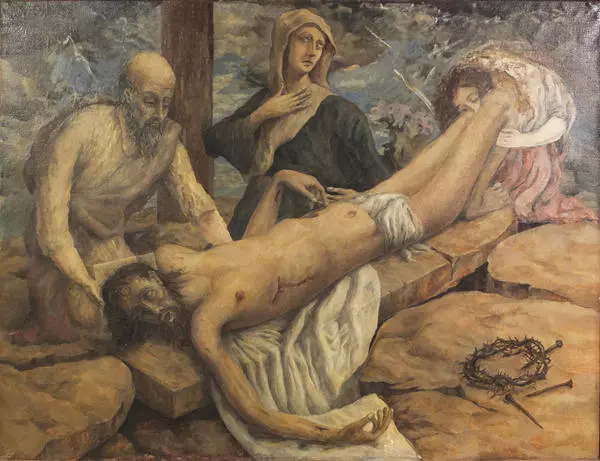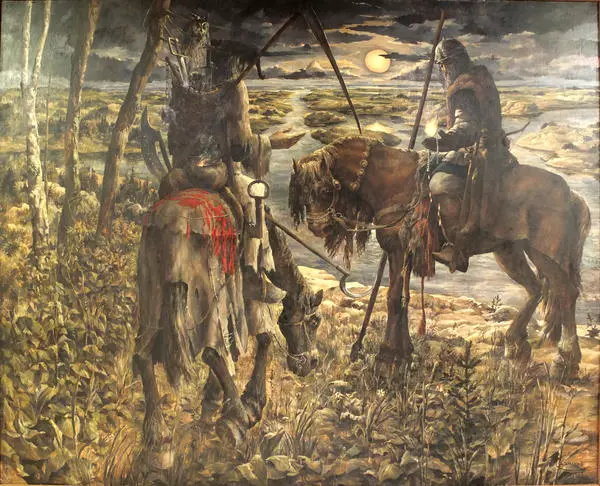In the 1989 painting The Calling of Euphrosyne of Polotsk, Sergei Simakov portrayed Predislava Svyatoslavna, the daughter of Svyatoslav Vseslavich, the Prince of Vitebsk. At twelve, having come of age, she refused a dynastic marriage and retired to a monastery. Predislava took the monastic vows under the name of Euphrosyne and settled in a cell of St. Sophia Cathedral in Polotsk. Euphrosyne donated money for the construction of churches and monasteries, copied and possibly translated books, encouraged her sisters to take the veil. She also was one of the most influential enlighteners of the time of the Polotsk Principality. She became the first Russian woman to be canonized.
The Calling of Euphrosyne of Polotsk
Время создания
1989
Размер
110x130 cm
Техника
Canvas, oil
Коллекция
Выставка
0
Открыть в приложении#1
Simakov S.B.
The Calling of Euphrosyne of Polotsk
#2
#3
Cathedral of Sophia the Wisdom of God in Polotsk Source: wikipedia.org
#4
Simakov portrayed Euphrosyne knelt for a prayer, flowers blooming under her feet in the snow. The legend about the saint’s life says that plants bloomed around her even in the most severe frost due to the extraordinary sincerity and warmth of her prayers. In her hands the reverend holds the Transfiguration Cathedral, which was erected thanks to her diligence. Young girls with burning candles in their hands are approaching Euprosyne, led by an angel. The saint was an example for those who decided to devote their lives to monasticism.
Transfiguration Cathedral of the Savior Euphrosyne Monastery
Source: wikipedia.org
#7
Above the cathedral, the Virgin is depicted in the image of Hodigitria; it is believed that such an icon was first painted by the disciple of Christ, the apostle and evangelist Luke.
#5
Byzantine Icon of the Mother of God Hodigitria, first quarter of the 15th century
Source: wikipedia.org
According to hagiographies, Euphrosinia so passionately wanted to have a Hodigitria created by Luke in her cell, that she fervently prayed for it to God and once sent her servant Mikhail to Constantinople. He persuaded the king and patriarch to donate the icon. Legend has it that, along with the icon of Virgin of Ephesus, Euphrosyne received a letter with patriarchal blessing. However, historians believe that it was a copy of the Constantinople Hodigitria that went to Polotsk, not the original painting from Ephesus.
#6
In the right corner of the picture, the scene of the introduction of the Mother of God to the Jerusalem Temple is depicted; thus Simakov compares Euphrosyne’s monastic life to the ascetic life of the Virgin. The holy Hierarch Demetrius of Rostov also noted that the reverend imitated the ancient Jerusalem virgins, among whom the Most Holy Virgin Mary dwelt: she lived in a cubicle attached to the wall of the church.
The Calling of Euphrosyne of Polotsk is not the only picture where Simakov portrayed the reverend. He also painted her on the canvas St. Euphrosyne of Polotsk. All these works were supposed to be used in the filming of the Belarusian film about Euphrosyne, the script for which was written by the artist’s friend, philosopher and writer Vladimir Shatskov. The paintings were supposed to depict Euphrosyne instead of a living actress. However, the shooting of the film never began.
The Calling of Euphrosyne of Polotsk is not the only picture where Simakov portrayed the reverend. He also painted her on the canvas St. Euphrosyne of Polotsk. All these works were supposed to be used in the filming of the Belarusian film about Euphrosyne, the script for which was written by the artist’s friend, philosopher and writer Vladimir Shatskov. The paintings were supposed to depict Euphrosyne instead of a living actress. However, the shooting of the film never began.
#8
State Autonomous Institution for Culture of Yaroslavl Region, Uglich State Historical, Architectural and Art Museum
читать дальшескрыть
00:00
00:00
1x
The Calling of Euphrosyne of Polotsk
Время создания
1989
Размер
110x130 cm
Техника
Canvas, oil
Коллекция
Выставка
0
Открыть в приложении
Поделиться

